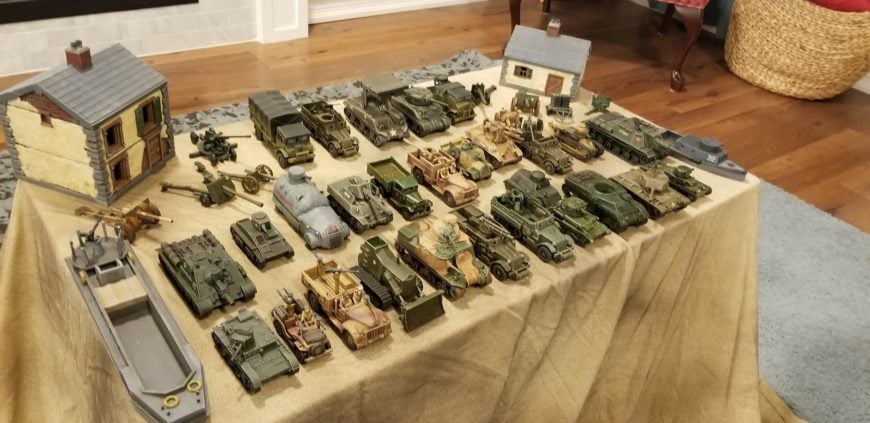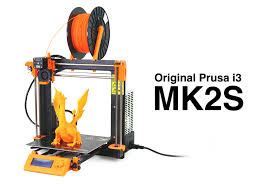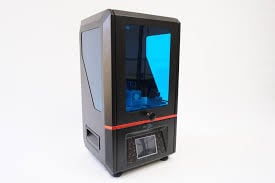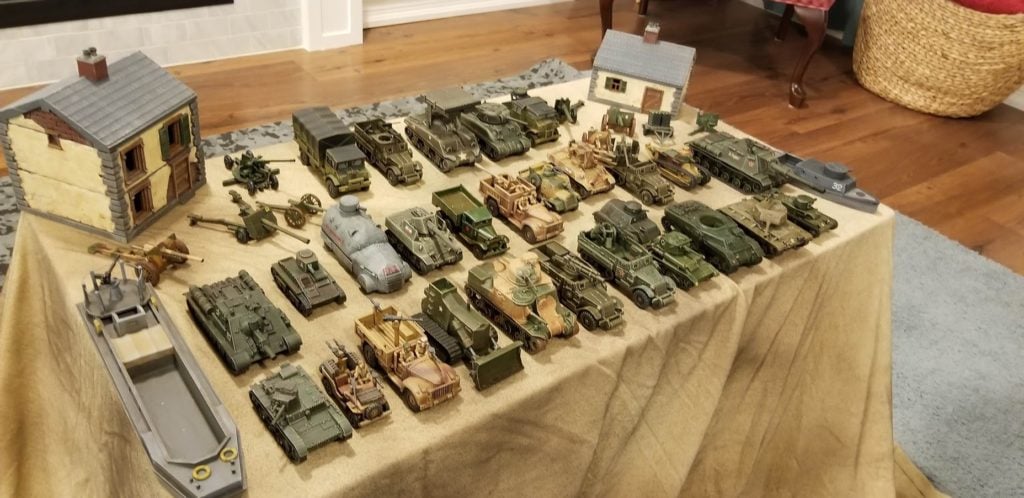Chapter 1 – 3d Printing and You- How Do I Get Started?… Or Should I Even Start?
** Disclaimer: I receive absolutely no material benefit, favour, or compensation for writing these articles. Any opinions stated is mine and mine alone and are based on my experience and knowledge. They do not reflect the opinions or views of anyone else. **
As I wrote in the introductory article, I would like to start this series by explaining what your options will be, should you choose to venture into 3D printing at home. I will review what you will be looking at to get set up into the hobby. Most of the cost, in the monetary sense, will be up front. The second cost will be time. That may be a bigger issue. But l will get back to that in a future article. For now, let’s, as they say, start at the beginning.
Do I need/want a 3D printer?
I know that had someone asked me a year ago why I was ordering a 3D printer, I would have probably answered “to print 28mm scale model tanks”. That would have invited the second question – “How much does a model tank cost?”, and I would answer “about $40” and they would then ask, “and how much is the printer costing you?” and I would hesitate and say, “ah… a little more than $40…”. Yea, not exactly a Warren Buffet worthy business decision. But I didn’t buy a printer to print “a” tank; I bought a printer to print a wide range of tanks, trucks, armoured cars, artillery pieces, terrain pieces, objective markers, and seemingly countless other items that have since greatly enhanced both my enjoyment of the game as well as helped our my local gaming club by being able to provide terrain for our regular games and the annual tournament. Each model I print out, which may cost me $3 in filament, has since reduced the prorated capital cost of the printer. It’s true I would have never dreamt of buying many of these models if I didn’t have the option to print them, but I enjoy having them, and few of them would even be available commercially even if I had wanted to buy them. So, the “need” part is a bit of a flawed argument – I didn’t “need” the printer any more than I “need” to game with miniature armies. I enjoy gaming, and the 3D printer greatly increases my enjoyment of my hobby.
Below is a photo of just some of the prints I have made over the past year. Many models are of vehicles and guns that I would not be able to buy commercially. Others are available, but for many times the production cost for me, even when I prorate my initial investment.

How much will I need to spend to get started? What special arrangements do I need at home?
Now this is the really stumbling block. The up-front cost. A study of this is made more complex because, unlike looking for a new laptop or tablet, they don’t yet sell 3D printers at the big box stores. It is difficult to do direct comparisons of models or even sometimes to know who is actually selling a particular printer and what its origin is. So, the adage “caveat emptor” should flash before your eyes before you click on the “complete purchase” icon on your screen.
I have been asked how little one can spend to get started in 3D printing, and that question worries me a bit. I fully understand the concerns, and we all want the best value for our hard-earned money. So please don’t think I am being glib if I make the comparison with a 17-year-old who really wants a car. He/she could go buy that 1994 Plymouth Neon parked on the lawn of a house three blocks over, with a hand-scrawled “4 sale” sign stuck behind the windshield. They may even get it for a low price. But would it be a good value? Or would it disappoint them, let them down and end up costing them more money than if they spent more at the start for something a bit more proven and reliable.
With that cynical sentiment I will start with a few cautionary “ Please DON’Ts”
Please DON’T buy into any Kickstarter, Indego or similar site in regards to a 3D printer. I am not knocking Kickstarter itself; I have purchased several items off that site and been very pleased with most, but the 3D printer offerings have a record of burning those who have bought in. One YouTube 3D printing channels I heartily endorse is Maker’s Muse, and the host, angus, gives a detailed history of the many Kickstarter 3D offerings – please watch the whole video.
[youtube https://www.youtube.com/watch?v=s9deNcysgts]Now as Angus says in the video, some offerings turned out okay, but with others the backers have simply lost all their money (he explains the basis of Kickstarter is not a “pre-order” – you have no guarantee of receiving your product nor will the product work as promised). You don’t want that to be you first 3D experience.
Please DON’T order anything online without understanding what you are buying. On Amazon and the like there are a lot of Chinese based retailers selling purportedly “CR-10” printers that are actually clones of CR-10s. There is nothing inherently wrong with a clone, but you have no idea who made that copy and what parts were used; the quality of the electronics and hardware will be unknown. The “product support” will likely be non-existent. Don’t get taken in with a lot of “5*” reviews – read through them and you may see a lot of cut and paste entries: “best printer ever. Very happy.”
Please DON’T buy anything that is not “open source”. Most of the more common home printers are “open source”, but you will see some models that seem to have all the bells and whistles but when you do a little research you will find that due to their design you can only use proprietary spools of filament ( e.g. the da Vinci 1.0 3D Printer) because they designed the unit to be compact and generic spools won’t fit. It would sort of like buying a Toyota and finding the car will only run on Toyota brand gasoline, which ends up being twice the price. Just something into check when you are comparing brands / models – is the hardware (extruder motors, hot ends, bearings etc. ) open source.
Okay enough with the negativity already. What should I “DO”?
You need to narrow your focus on which of the two types of 3D Printers suits your needs and environment – FDM or SLA? A quick explanation of each
FDM or fused deposition modeling
These are currently the most common type of home printer. They use spools of plastic filament (1.75mm is the standard, although there are 3.0 mm filament printer, but they are much less common in-home use, in my experience). A quick review of how they work is found here, courtesy of good old wikipedia.
FDM printers can handle a wide range of filaments, but I don’t want to get off on that topic yet. Suffice to say an FDM printer can readily print with the filament type(s) you will need to use for our hobby purposes.
Below is a photo of an FDM printer, the Prusa Mk2S (which is what I own)

SLA or Stereolithography apparatus
SLA printing uses a completely different process to create your 3D model. A brief overview of the process is given here, by our friends at Wikipedia.
SLA is generally able to obtain much finer detail than an FDM printer, but that comes with some significant downsides. These include a more complicated post-production process, the use of toxic resins, being limited to a smaller build plate (meaning the size of you print may be limited, dependent on its orientation. It likely wouldn’t matter for a 28mm AFV but would on a terrain piece).
I am going to defer to Angus at the Maker’s Muse again, as he outlines the benefits and pitfalls of SLA printing- it is short video – <10 minutes; it is very informative.
[youtube https://www.youtube.com/watch?v=7kHcsTG9QsM]I personally believe you should think hard before choosing to get an SLA printer for your first printer. The learning curve for 3D printing is steep enough without adding the additional issues that come with SLA printing.
Below is a photo of the Anycubic proton, which is a very popular home SLA printer.

So, as I did caution in my disclaimer, I will espouse some opinions, which you are quite free to ignore, but I am a little reluctant to encourage you to leap into this hobby with an SLA printer. I know there will be people saying that they had no issue, and it all went peachy, but to the best of my knowledge Murphy’s Law has never been repealed and in my lengthy life experience I have found it to be continual enforced.
Hopefully I haven’t deterred anyone yet. In the next chapter I will go through some of the more popular home 3D printers available and talk about some features you will want to look for.
As always, if you have questions about what I have covered, please let me know.
Thanks again.
